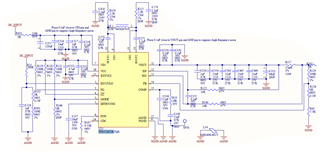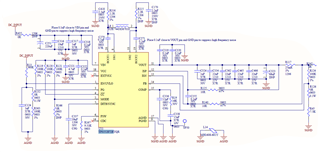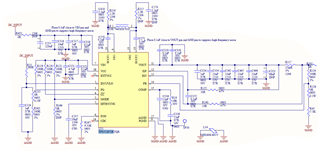Tool/software:
AFter Soldering back the IC, The output voltage is regulated. once you turn off the IC doesn't restart. ( Internal VCC pin 18 < 1 ).
Load is not connected. I replaced the IC, it started working first time and drawing current of roughly about 50mA ( as seen in DC Supply ), I turned ONN and OFF a couple of times, it was working. I turned ONN after a while then the Current was increased to 120mA. I turned OFF and turned ONN again , Output voltage is 0.
I have two boards, Each board, the same thing happens. It came for the first time, It doesn't turn ONN again. Please advise
Note: i have used this iC in my previous version of board, similar schematic as shown below, never seen this type of behavior.




